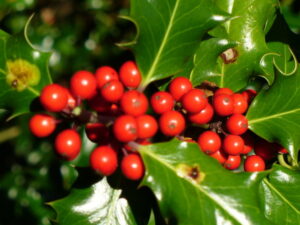11:30 New LAND Academy students picked-up by Casady bus at 1021 NW 37th Crown Heights Methodist Church. Bus driver Jay Gallegly (cell 405-255-0136). Contact person at New Land Academy: Misty: 405-471-1082
11:45 New LAND Academy meets Mrs. Clay Spanish (cell: 405-520-1325) I class at Harper Wing.
Introductions
Learn about each other, Posadas and Holiday songs in Spanish
12:16: Walk to lunch at Calvert. Tables for New Land Academy reserved at Calvert (22 students, 3 teachers)
Thank you e-mail from Mrs. Clay
Dear New Land Academy students and faculty,
Thank you for spending time with my Spanish I class.
We had a few minutes to share what they learned and I wanted to let you know that my students thanked me profusely for the opportunity to share time with your students.
Spanish I Cyclones loved the New Land Academy students interest in their daily routine. They were also amazed about the English skills displayed by the majority of the New Land Academy students, even the ones who recently arrived in the USA.
My students spoke about the similarities in sports, musical instruments, types of songs and some dreams like becoming engineers or acrobats - they mentioned the sport, but I cannot recall the name.
They were also amazed about the number of languages some of the students speak. I heard that there is a possible Arabic language instructor in New Land Academy.
I am attaching a picture of my students taken during Halloween. I am also attaching the PP we are working with this month. Slides 39-45 might be of interest.
I will share my Mind Body and Spirit tile with my students tomorrow. Please visit http://
Happy Holidays!
12:55 -1:41 New LAND Academy students with Art Club @ Records, Mrs. Pardue's classroom
1:50 New LAND Academy students board Casady bus from Chapel parking lot to return to 1021 NW 37th Crown Heights Methodist Church
Learn about Students Rebuild Healing Classrooms: Pinwheels for Syrian RefugeesSpanish I Welcomed New Land Academy
Shared Las Posadas and Villancicos
Learned about each other's schools, preferences, dreams for the future
STUCO and Coach T. provided Walk-A-Thon 2015 T-shirts for students and their teachers. YAC provided the experience of Paneton with hot chocolate for their last day of school in 2015, which will be tomorrow- the first day of Las Posadas in Mexico.
Sage Dinning provided lunch for New Land Academy. Some Spanish I students helped teach about our family style. Some New Land Academy students experienced being Number 1 and Number 2 waiters. They learned about our Family style dinning exponentially.
After lunch, Art Club played "Pictionary" and gave Xmas stockings, which they had made and decorated for every member of the school. The stockings were filled with favorite Cyclone candies and writing utensils.
After playing Pictionary, the students from New Land gave thank you tiles, MIND, BODY, AND SPIRIT in all the languages represented in their school
misty
We had such a wonderful time getting to know your students and learning more about Casady. You have a true gift for hospitality and for showing love to others.
Thank you for the power point. WE will enjoy going through it.
Also, we appreciate the connection with Kevin and we are super excited about our new NLA/CASADY connection.
Hoping you have a Merry Christmas!
| |||||
| |||||
|


No comments:
Post a Comment